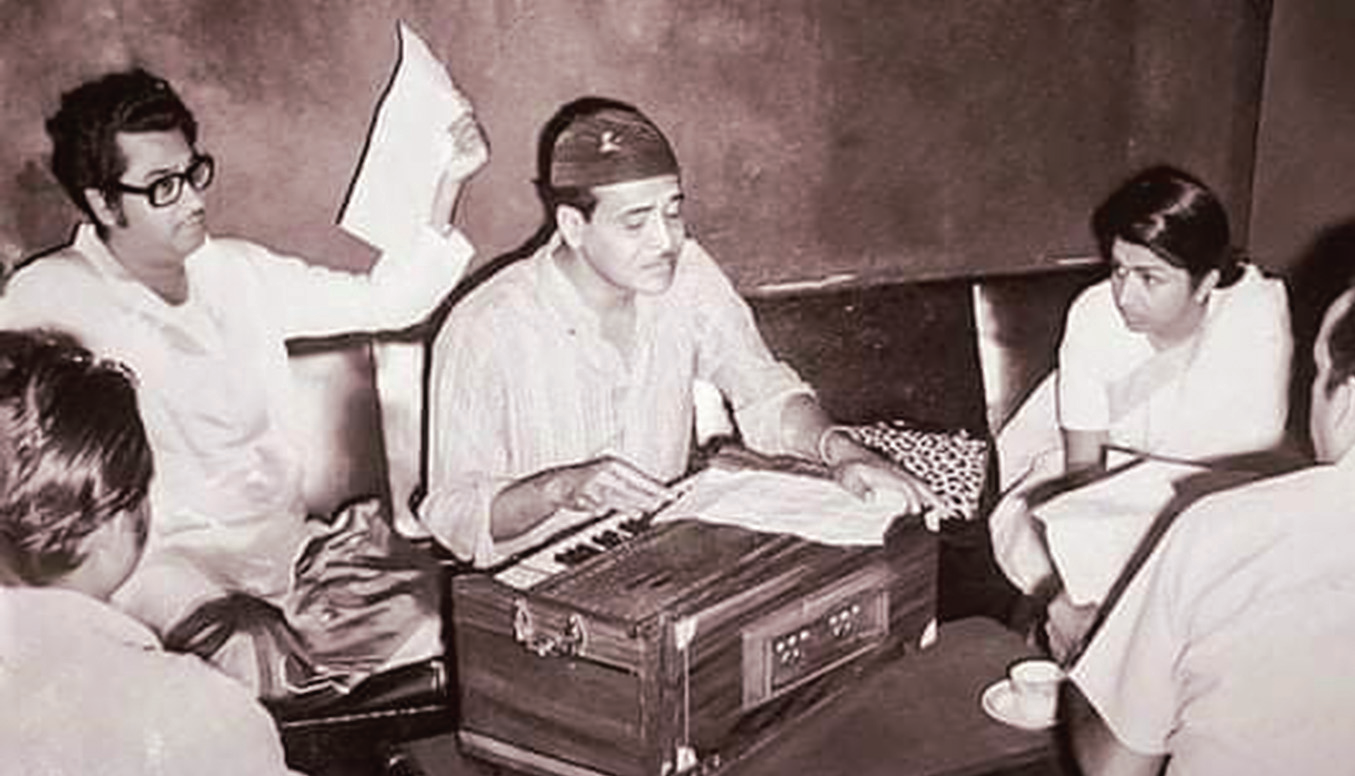
AVINIBESH SHARMA writes about Lata Mangeshkar's first meeting with Bhupen Hazarika and her intimate connection with Assam.
Bharat lost a 'Ratna' with the passing of Lata Mangeshkar. In her seven decade-long career, the Nightingale of India, as she is popularly known, enthralled generations with her silken voice. The March 1956 edition of Vogue labelled her as the woman with Ma Saraswati in her throat, and rightly so. Interestingly, it was around this time when her association with Assam began. She was introduced to the Bard of the Brahmaputra, Dr Bhupen Hazarika in her Mumbai residence that year and sang the memorable Jonakore Raati Axomire Maati for Hazarika's directorial debut Era Baator Xur. However, there are varying accounts of their first meeting; and sometimes one account does not match with the other. But sifting through the various accounts of the first rendezvous, written by the Bard, one can decipher that it was either during the making of the Bengali film Asamapta or Era Baator Xur that they met in Mumbai.
Bhupen Hazarika was visiting Mumbai to record a trio with Hemanta Mukhopadhyay and another singer. They were searching for a female singer, and it was mutually decided that they would go for the young Lata Mangeshkar, who had sung a few songs in Bangla by then.
Hemanta took Bhupen to the sea facing residence of Lata called Balkeshwar House. A lady opened the door and welcomed them inside. And there was Lata, dressed in a white sari. She was cuddling her favourite Chinese dogs sitting on the floor. As soon as Hemanta introduced Bhupen to Lata, she said, "Oh, well! I have heard about you from Balraj Sahni, Salil da, Bimal da and Hemanta da. Your name suggests a much older person, but you are quite young." And she burst out laughing.
As Hemanta began talking with Lata, Bhupen tried not to look around the room conspicuously; but he noticed the pictures of Shivaji and Lata's father, Dinanath Mangeshkar hanging on the wall. There was also a scale model of Mahalaxmi Mandir. A chain smoker then, Bhupen was becoming restive to light a cigarette. He considered himself to be a misfit in this sacred room. After a while they started conversing. "I will call you Bhupen da," Lata said with a smile, attempting to put him at ease. Bhupen reciprocated with a big, warm smile, told her about the song that he had written and composed (one account says the song was penned by Pulak Bandhyopadhyay, but in all probability it was either Jonakore Raati or Rod Puwabor Karone for Era Baator Xur). He hummed the melody and Lata liked it. She asked him to elaborate on the meaning of the song, which Bhupen did. He said to her that they would be recording the song soon, if she agreed.
The recording began soon thereafter. Lata took her Chrysler to Hemanta Mukhopadhay's house, picked up Bhupen and headed out for the recording session. She also took him to Pune and Kolhapur during this period. During one such long drive, they hashed out the cultural similarities between the Marathis and the Assamese: Icons like Lachit Barphukan and Shivaji, spiritual teachers like Ramdas and Srimanta Sankaradeva, the Usha and Sita lores. They also discussed the folk scene: Bihu Naam, Aai Naam and Borgeet in Assam and Ovi, Powada and Tamasha in Maharashtra. Lata then paused for a bit and said, "Do you know Bhupen da? Nowhere else except in Maharasthra and Assam do people call their mothers 'Aai'. Like the Assamese, we too address our mothers as Aai in Marathi."
It was during their initial meetings that Lata shared with Bhupen her struggle of tending to her family after her father died when she was just 13. Looking out at the sea from Bandra, Lata said to Bhupen, "It was exactly a decade ago. I took a roti, a green chilli and some salt, and I was about to eat when my younger brother Hridaynath began wailing. The wound on his leg was becoming unbearable. My mother and my three sisters Asha, Usha and Meena were looking helpless. I had become exhausted after moving from one studio to the other in search of an opportunity for playback singing. And I had just come home to eat something. But I couldn't. I gave the roti to my brother; and I promised myself: I have to be an achiever. I was the eldest in my family and I was just 17."
Their association flourished thereafter. Jonakore Raati Axomire Maati became an overnight sensation and the songs from the Bengali film Kari-O-Komal composed by Bhupen Hazarika and sung by Lata (Asta Akashe Boner Chita Jwole and Tir Bendha Pakhi) became immensely popular. Lata gained a wide audience in Bengal through the songs composed by Bhupen Hazarika and written by Pulak Bandyopadhyay and like Mone Rekho and Rongila Bansite Ke Daake. She also went on to record seven songs in Assamese, only one written and composed by someone other than Bhupen Hazarika (Akax O' Akax penned by Phani Talukdar and composed by Salil Choudhury for Aparajai). Lata also sang for Bhupen whenever he wielded the baton for a Hindi film. Naino Mein Darpan from the film Aarop and Dil Hoom Hoom Kare from Rudaali retain their effervescence till date. She also came down to Guwahati for a performance in March, 1988.
Right from the time of the gramophone, transistor radio and turntable through the age of compact cassette tapes, compact discs, walkmans and MP3 players to the iPods of the present time, Lata's mellifluous voice has enraptured generations and slipped across borders; her songs defining our moods and emotions. As for the people of her 'Duronir Dex' Assam, they would also remember the Nightingale through her association with the Bard of the Brahmaputra and the evergreen songs they produced together. As I write this piece, some expatriate may be remembering Lata by humming Jonakore Raati or Godavari Noir Parore Pora Axomi Aailoi Jasu Pronam.
